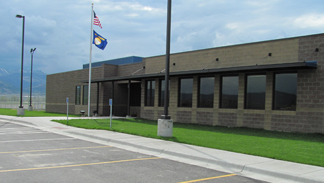Intermediate Sanction Facility

ANACONDA, Mont. — Corrections officials in Montana opened a new $12.3 million revocation-sanction facility designed to reduce unnecessary prison admissions by diverting low-risk offenders away from state prisons.
The new 40,000-square-foot Sanction, Treatment, Assessment, Revocation and Transition facility, which cost more than $10.3 million to construct, provides 142 beds for adult offenders. Designed by San Francisco-based firm KMD Architects, the facility also incorporates an additional 10 special-needs beds designated for mentally ill offenders.
Butte-based Community, Counseling and Correctional Services Inc. won the contract to operate the new START facility for the state Department of Corrections after successfully managing a 3-year pilot program launched in December 2005. The program operated out of an existing facility on the campus of the state hospital in Warm Springs for the duration of its pilot phase.
The START program provides short-term, secure housing for offenders who violate the conditions of their community placement and who would otherwise be automatically subject to increased sanctions, such as incarceration.
Current outcome measures of the intermediate-sanction initiative indicate that more than 80 percent of offenders placed in START are successfully diverted from prison. During the first two years of the pilot phase, prison admissions in Montana dropped 12.5 percent, according to official figures.
Based on short-sharp-shock modalities, the program uses a taste of incarceration, coupled with personal needs assessment and tailored treatment, to get offenders back on track.
The START program relies on a comprehensive range of assessment tools that help staff develop an intensive, tailored treatment/programming regimen designed to return offenders to their original supervision status in the community without resorting to long-term prison incarceration.
Licensed addiction counselors provide chemical dependency treatment.
State authorities implemented the alternatives-to-incarceration initiative with the primary objective of reducing the number of unnecessary admissions to the overburdened state prison system. Diverting low-risk offenders to treatment and program-intensive community based facilities is less costly than prison placement on a per-bed basis, officials say.
Handling low-risk offenders by using intermediate sanctions that fall short of incarceration also serves to reduce prison overcrowding and reserves costly and finite bed space for higher-risk offenders, officials say.
